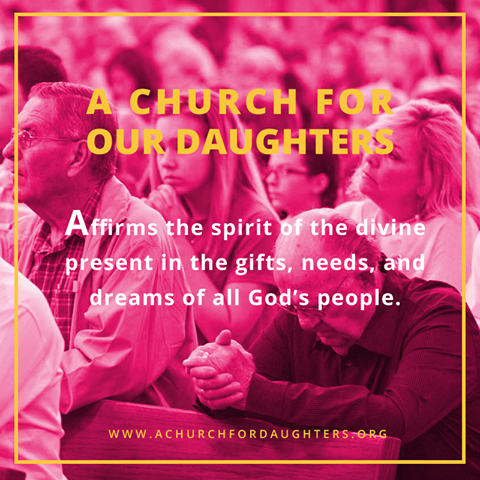A Church for our “Daughters” – But…But…But…What About Our Sons?
This weekend I was searching through articles and websites for material for an ongoing feature on women I suggested for our church bulletin during Women’s History Month this March. (Funny thing about suggesting: you suddenly become the “volunteer” to put it all together! I really didn’t mind though because I had wanted this kind of focus on women and their gifts to be included as a weekly bulletin feature for some time.)
I began to collect short excerpts focusing on a variety of ideas about women’s place in the church, examples of women’s leadership and influence from past and present, and inspirational and even controversial perspectives regarding women and ministry. I knew I could not bring up the strictly forbidden “women’s ordination” references since I didn’t want our priest “fired” (or whatever euphemism they would use to explain their removing him, suspecting his fate would be far worse than that of – oh, say – pedophile priests). But I was, and am, planning to make a plea for more inclusive language and non-gender based references to God and the need for more attention to a “Church for our Daughters”.
This led me to achurchforourdaughter.org,and I came across such an interesting segment, one that answered a concern I had had ever since that particular campaign started: Our daughters, yes, but what about our sons? Especially given our constant affirmation of inclusivity? What’s going on here?

It turns out these are exactly the questions the organizers wanted us to have. And their answer was, I think, brilliant: “The central focus in the role of women would be less sharp if ‘sons’ were in the title.” Of course, sons are by implication included; they are just not named. “Daughters” is left to cover it all, just as the Church – and society at large – for centuries has been letting the word “man” or “men” or sometimes even “sons” cover all genders.
Here’s what the writers had to say:
We might go further. Let us reflect on this. If “women” or “daughters” are not named, if and when they are included, it will always be in a secondary way. Equality is most often a causality of our nomenclature. “Yes, of course. We include women”. The inclusion, however, puts “women” in their place, in the place they were presumed to occupy, in the place, most men preferred that they occupy.
Apart from calling attention to all these consequences, it is a hope of ours that women themselves will feel the difference and act appropriately.
Using the female “Church for our Daughters” to include all genders by implication raises an awareness of our critical need for named inclusion – a perspective that may have escaped us otherwise. Well done!

2 Responses
Religious patriarchy harms the sons as much as it harms the daughters, perhaps even deeper.
In Indonesian there is only one common pronoun for males and females. Is this a possibility to update English and Latin? E.g. Use ‘Children’ rather than ‘Sons’ and ‘Daughters’?